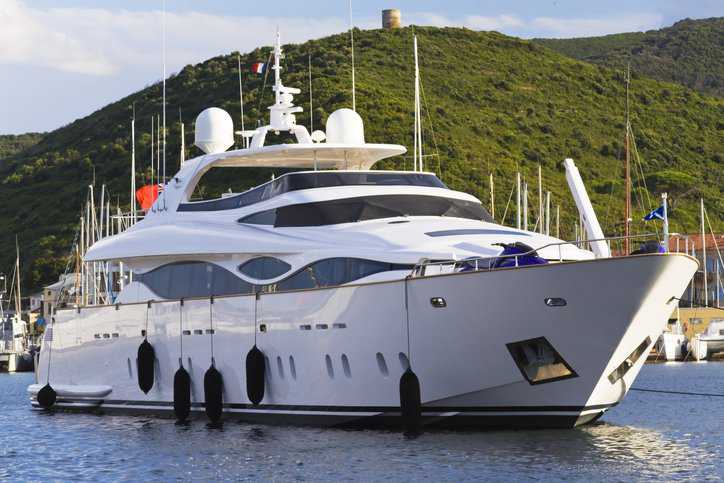A superyacht is typically defined as a vessel that is at least 24 meters (78 feet) long and has a full-time crew. Currently, there are 5,396 superyachts—over 30m / 98ft in length—operating in the world. ISO 11336-1:2023— Large Yachts – Strength, Weathertightness And Watertightness Of Glazed Openings – Part 1: Design Criteria, Materials, Framing And Testing Of Independent Glazed Opening covers specifications for the design of glazed openings on all large yachts.
Largest Yachts in the World
Representing more than just luxury and opulence, the largest yachts in the world are feats of design and engineering. As such, every year, shipyards from around the world push the boundaries of superyacht design to deliver bigger and better yachts.
- Somnio – 728 FT. (222M) * currently in build.
- REV – 600 FT. (182.9M)
- Azzam – 590 FT. (180M)
- Fulk Al Salamah – 538 FT (164M)
- Eclipse – 534 FT. (163M)
- Dubai – 531 FT. (162M)
- Dilbar – 512 FT. (156M)
- Al Said – 509 FT. (155M)
What Is ISO 11336-1?
ISO 11336-1:2023 specifies technical requirements for independent glazed openings on large yachts, taking into account navigation conditions, the location of the opening and the materials, framing, and testing. It defines large yachts as yachts with length of the hull, LH, higher or equal to 24 m, used for sport or pleasure and commercial operations.
The standard is related and limited to independent glazed openings (i.e., opening in the hull, superstructure,or deckhouse of a ship structure to be fitted with a transparent or translucent material) in which the pane is supported solely by simple linear support at the edges.
Where yachts carry more than 12 passengers, the additional requirements (set by the appropriate marine administration) for fire integrity and damage stability are outside the scope of ISO 11336-1:2023.
Changes in the 2023 Edition of ISO 11336
The main changes in ISO 11336-1:2023 are as follows:
- The Scope has been expanded to include length, number of passengers, and glazing materials
- The design pressure model has been parameterized and adapted to cover larger yachts
- More advanced scantling calculation methods have been added
- A new approach on robustness of superstructure and hull glazing has been added
- Annex H has been replaced with information on the main changes
- Annexes I, “ Direct method for the determination of the glazing laminate cross-section,” and J, “Testing of glazing as secondary barriers,” have been added
Origins of the Word “Yacht”
The word “yacht” comes from the Dutch word jacht, which means “hunt.” In the 16th century, jacht was given two meanings: ships in war fleet/racing vessels and hunting/pursuit/speed. The first record of a yacht regatta dates back to 1661 under the reign of King Charles II of England, and thanks to Great Britain, the yachting movement returned. Thus, the English pronunciation of the word “yacht” came about.
Superyacht and Megayacht
There are two terms that fall under a “yacht:” “megayacht” and “superyacht.” Although there is no true definition of either term, they are each synonymous with affluence and glamor. A superyacht is considered to be a yacht that is at least 78 feet or 24 meters, while a megayacht is believed to be around 200 feet or 60 meters.
Superyachts usually offer elegant entertaining, dining areas, hot tubs, swim platforms on the waterline, and a huge array of watertoys. On megayachts, gyms, spas, helipads, private owners’ deck, and cinemas have become standard features, and additionally many include palatial beach clubs, high-speed chase boats, and submarines.
The general facilities are nearly the same for superyachts and megayachts, but the distinction is that megayachts are quite larger in size.
ISO 11336-1:2023— Large Yachts – Strength, Weathertightness And Watertightness Of Glazed Openings – Part 1: Design Criteria, Materials, Framing And Testing Of Independent Glazed Opening is available on the ANSI Webstore.
